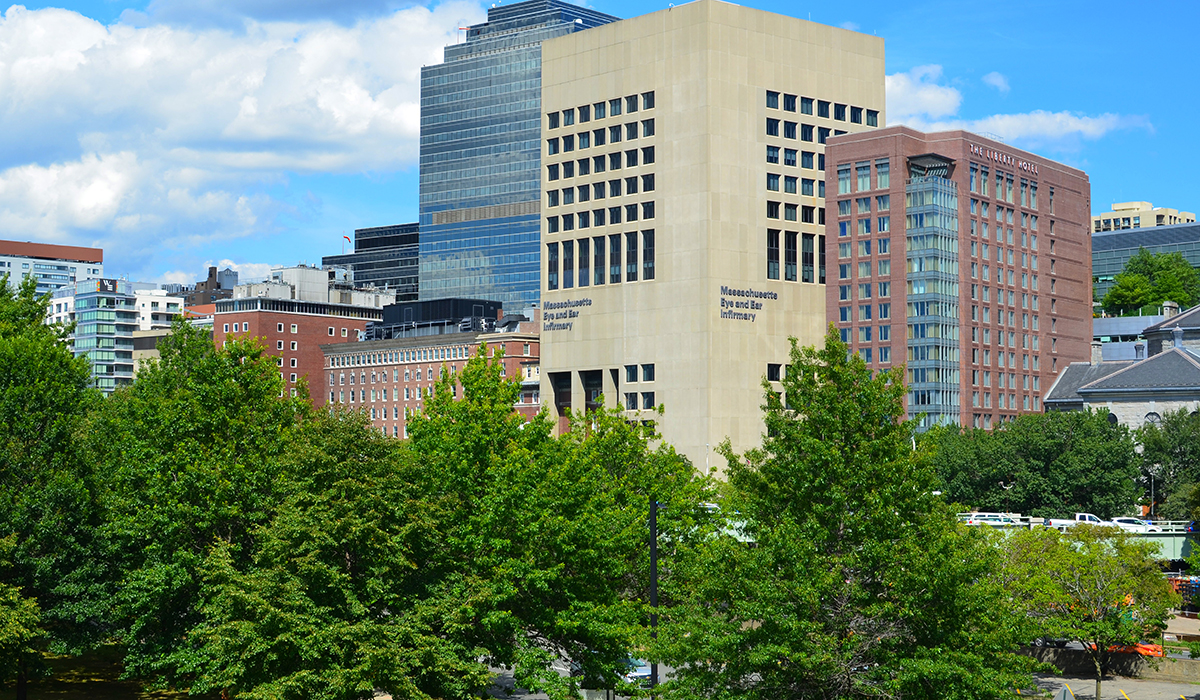Harvard Medical School Researchers Awarded $1.3 Million Prize

Mass. Eye and Ear Building photo provided.
Six Harvard Medical School researchers have been awarded the prestigious 2014 António Champalimaud Vision Award—a $1.3 million gift—recognizing the development of an anti-angiogenic therapy (drugs that halt the process of developing new blood vessels) for retinal disease, which can cause blindness. The award is considered to be the “Nobel Prize for ophthalmology.”
The researchers include:
Joan Whitten Miller, M.D., Evangelos S. Gragoudas, M.D., and Patricia A. D’Amore, Ph.D., MBA, of Massachusetts Eye and Ear; Lloyd Paul Aiello, M.D., Ph.D., of Mass. Eye and Ear and Joslin Diabetes Center; George L. King, M.D., of Joslin Diabetes Center; and Anthony P. Adamis, M.D., of Genentech, who is also affiliated with HMS Ophthalmology and Mass. Eye and Ear. Napoleone Ferrara, M.D., of University of California, San Diego School of Medicine and Moores Cancer Center, also received the award.
The group was honored Wednesday at a ceremony held at the Champalimaud Centre for the Unknown in Lisbon, Portugal. Established by The Champalimaud Foundation in 2006, the award is given in even-numbered years to vision research, and in alternate years for efforts to alleviate visual problems in developing countries or through humanitarian endeavors.
According to a statement released by Mass. Eye and Ear, the recipients of the award have been working on therapies for retinal disease since the 1990s:
In the 1990s, the 2014 Champalimaud Award Laureates worked in parallel and in collaboration to identify vascular endothelial growth factor (VEGF) as the major trigger for angiogenesis in the eye. Angiogenesis, or blood vessel growth, underlies the pathology of various blinding retinal disorders, including age-related macular degeneration (AMD) and diabetic retinopathy. Abnormal vascular growth ―a process called neovascularization―above or below the retina allows fluid to leak into the central retina, causing vision loss.
The researchers then demonstrated that blocking VEGF could suppress ocular angiogenesis. This biomedical breakthrough led to a new class of ophthalmic anti-VEGF drugs, which first became available in the United States December 2004 with the introduction of pegaptanib (Macugen®) for the neovascular or “wet” form of AMD. Multiple ophthalmic drugs targeting VEGF activity have since followed, including the widely used ranibizumab (Lucentis®), introduced June 2006, and aflibercept (Eylea®), introduced November 2011. Bevacizumab (Avastin®), an anti-VEGF drug originally developed for cancer and introduced February 2004, is also widely used for treating retinal disease.
Mass. Eye and Ear reps say that the development of anti-VEGF therapy for retinal disease is considered one of the top biomedical advances of the past decade. “In 2006, the development of ranibizumab for neovascular AMD was featured in Breakthrough of the Year, a list of the 10 most significant scientific developments compiled annually by the journal Science,” the report says.
The researchers will use the funds from the award to further their research efforts to cure blindness.
Award recipients are selected by an international jury panel that includes two Nobel Laureates and other prominent figures. The Champalimaud Vision Award, with its €1 million ($1.3 million USD) purse, it is among the world’s largest scientific and humanitarian prizes.


